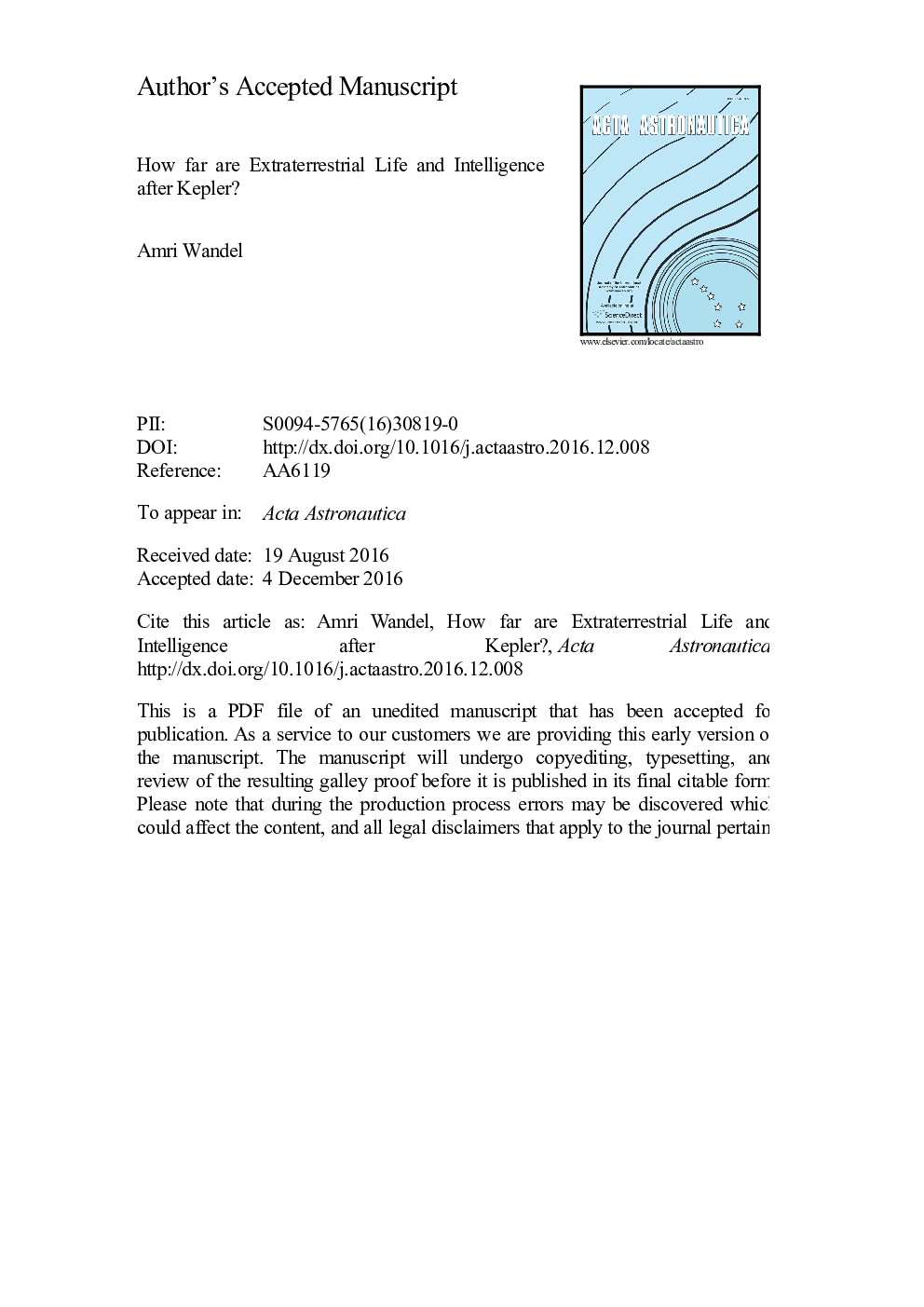| کد مقاله | کد نشریه | سال انتشار | مقاله انگلیسی | نسخه تمام متن |
|---|---|---|---|---|
| 5472462 | 1519917 | 2017 | 14 صفحه PDF | دانلود رایگان |
عنوان انگلیسی مقاله ISI
How far are extraterrestrial life and intelligence after Kepler?
ترجمه فارسی عنوان
چقدر دور از زندگی و هوش فرازمینی پس از کپلر است؟
دانلود مقاله + سفارش ترجمه
دانلود مقاله ISI انگلیسی
رایگان برای ایرانیان
کلمات کلیدی
موضوعات مرتبط
مهندسی و علوم پایه
سایر رشته های مهندسی
مهندسی هوافضا
چکیده انگلیسی
The Kepler mission has shown that a significant fraction of all stars may have an Earth-size habitable planet. A dramatic support was the recent detection of Proxima Centauri b. Using a Drake-equation like formalism I derive an equation for the abundance of biotic planets as a function of the relatively modest uncertainty in the astronomical data and of the (yet unknown) probability for the evolution of biotic life, Fb. I suggest that Fb may be estimated by future spectral observations of exoplanet biomarkers. It follows that if Fb is not very small, then a biotic planet may be expected within about 10 light years from Earth. Extending this analyses to advanced life, I derive expressions for the distance to putative civilizations in terms of two additional Drake parameters - the probability for evolution of a civilization, Fc, and its average longevity. Assuming "optimistic" values for the Drake parameters, (Fb~Fc~1), and a broadcasting duration of a few thousand years, the likely distance to the nearest civilizations detectable by SETI is of the order of a few thousand light years. Finally I calculate the distance and probability of detecting intelligent signals with present and future radio telescopes such as Arecibo and SKA and how it could constrain the Drake parameters.
ناشر
Database: Elsevier - ScienceDirect (ساینس دایرکت)
Journal: Acta Astronautica - Volume 137, August 2017, Pages 498-503
Journal: Acta Astronautica - Volume 137, August 2017, Pages 498-503
نویسندگان
Amri Wandel,
